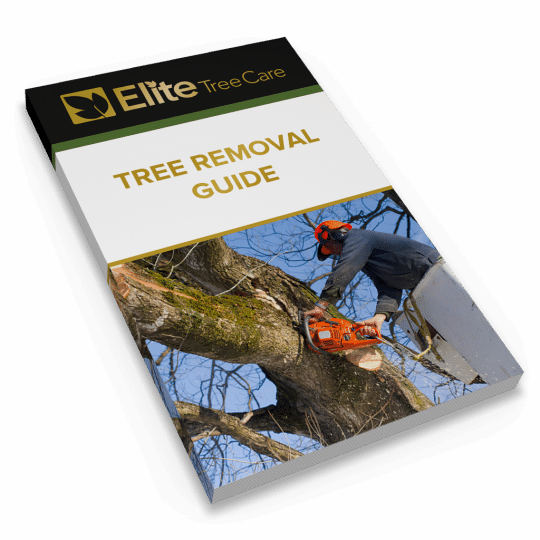6 Tips for Tree Removal Safety
Posted
July 7, 2016

Even for the most experienced tree service professionals, tree removal is a serious undertaking. When falling trees and live chainsaws are involved, safety is an absolute must. If you’re attempting a removal yourself, follow our tips on tree removal safety to protect yourself and finish the job unscathed.
Six Tips on Tree Removal Safety
When a tree must come down, make it fall where you want it. Here are our top six tips on tree removal safety.
- Gear up – A hard hat, safety glasses and leather gloves will protect you from deadly falls, flying debris, stings, bites, cuts, and electrocution. Ear protection and Kevlar chaps are important if you plan to operate a chainsaw. This type of chaps will stop a blade immediately if you accidentally drop the bar against your leg. As with any heavy duty outdoor job, wear long sleeves and slip-resistant shoes.
- Check power lines – Don’t get close to a live wire. You don’t even have to touch a live wire to get hurt. Just touching a branch that’s touching a wire can cause a fatal injury. If the tree is within 10 feet of a power line, don’t attempt any work on it. Call the electric company instead. They can usually send out help to the site and insulate or turn off the line during the tree removal process.
- Stay on terra firma – Only attempt a removal job that allows you to keep both feet on solid ground. Untrained homeowners can get into trouble quickly when they try to prune big trees from a ladder. If you can’t do the work safely, call in a professional instead.
- Protect others – Estimate the tree’s “felling zone” and then mark off that space appropriately, to protect yourself, your work partner, family members, pets, and pedestrians. Trees are taller and reach farther on the ground than you’d think. You can estimate where a tree will land by using the “ax handle trick.” (Hold an ax handle at arm’s length, close one eye, and retreat from or move toward the tree until the top of the ax is even with the treetop and the bottom is even with the base. Your feet should be close to where the treetop will rest after falling. Always pad your felling zone estimate with extra room. Estimates are only estimates, and falling branches can kill.
- Work with a partner – It’s always safer to work with a partner. Have a trusted person stand several feet behind you and monitor the top of the tree for falling branches and to let you know when the tree starts to fall. Have him or her tap you on the shoulder with a stick to let you know when a branch is falling or it’s time to leave the area. Both you and your partner should be trained in CPR and first aid, should an emergency arise.
- Get smart – Educate yourself on the weather, the equipment, the tree and the tree’s surroundings before you fire up the chainsaw. Learn how to use your ax or chainsaw to cut notches and take off branches in a methodical way. Inspect the tree and limbs for cracks and damage. Take note of dead branches that are broken but attached or that are being supported by other branches, as their removal will be hazardous. If there are things that you care about in the felling zone, skip the DIY attempt and call in a certified professional. Remember, your life, health and property are precious!
Ask the Experts about Tree Removal Safety
If you have any questions about tree removal safety or want assistance with tree removal, call Elite Tree Service at 610-935-2279. Our team of ISA-certified arborists are fully insured and can help you remove trees big and small, completely and safely. Our professionals are highly trained expert climbers who are dedicated to continued education in their field. How can we help you?

Download Your FREE Tree Removal Guide
Even dedicated DIYers should think twice before taking on the task of tree removal. Our guide will help you decide whether to hire a tree service and how to get the most value for your money.